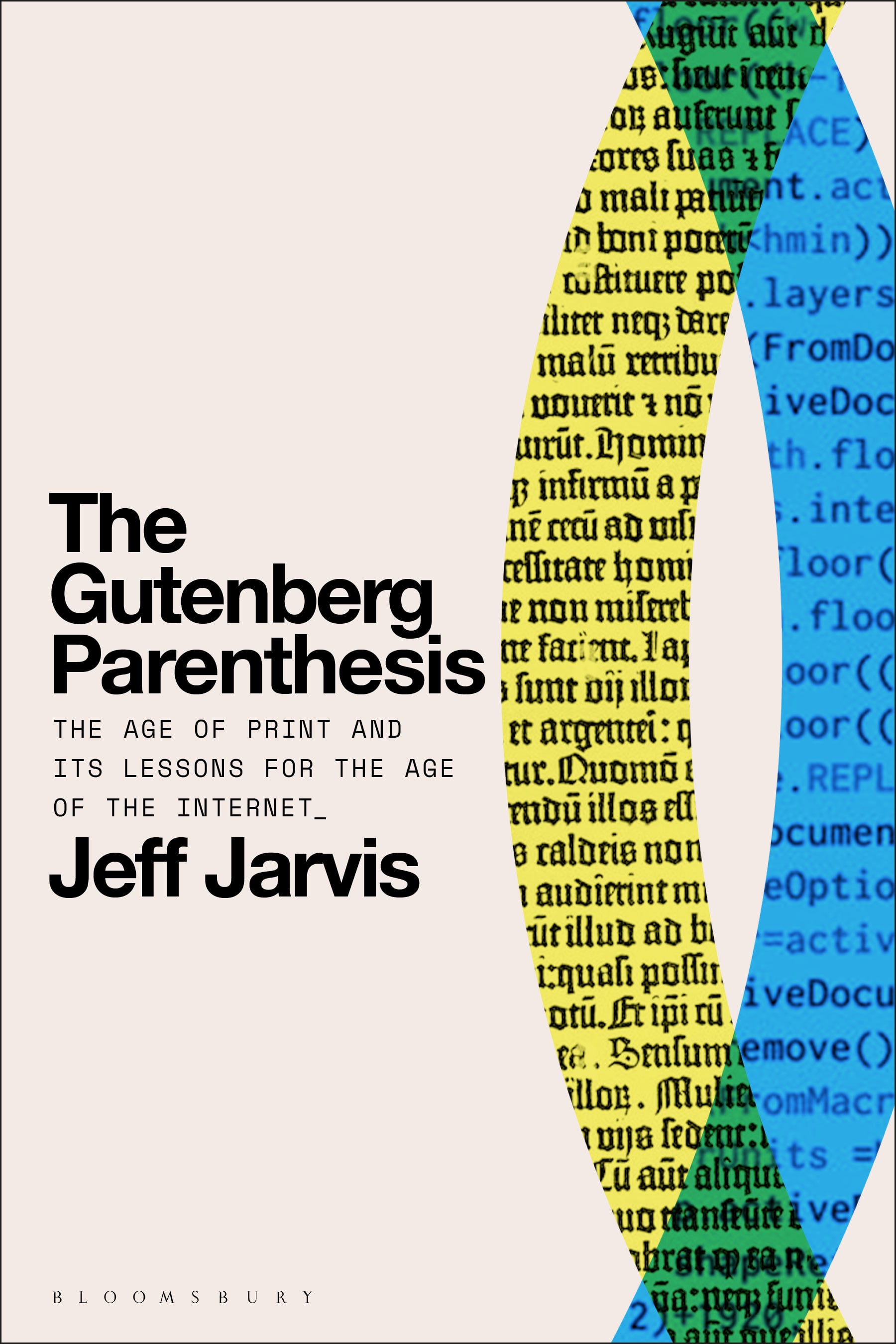English language
Published June 4, 2023 by Bloomsbury Publishing Plc.

English language
Published June 4, 2023 by Bloomsbury Publishing Plc.
The Gutenberg Parenthesis traces the epoch of print from its controversial beginnings to our digital present—and draws out lessons for the age to come.
The age of print is a grand exception in history. For five centuries it fostered what some call print culture—a worldview shaped by the completeness, permanence, and authority of the printed word. As a technology, print at its birth was as disruptive as the technologies of today. Now, as the internet ushers us past print culture, journalist Jeff Jarvis offers important lessons from the era we leave behind.
To understand our transition out of the Gutenberg Age, Jarvis first examines the transition into it. Tracking Western industrialized print to its origins, he explores its invention, spread, and evolution, as well as the bureaucracy and censorship that followed. He also reveals how print gave rise to the idea of the mass—mass media, mass market, mass culture, mass …
The Gutenberg Parenthesis traces the epoch of print from its controversial beginnings to our digital present—and draws out lessons for the age to come.
The age of print is a grand exception in history. For five centuries it fostered what some call print culture—a worldview shaped by the completeness, permanence, and authority of the printed word. As a technology, print at its birth was as disruptive as the technologies of today. Now, as the internet ushers us past print culture, journalist Jeff Jarvis offers important lessons from the era we leave behind.
To understand our transition out of the Gutenberg Age, Jarvis first examines the transition into it. Tracking Western industrialized print to its origins, he explores its invention, spread, and evolution, as well as the bureaucracy and censorship that followed. He also reveals how print gave rise to the idea of the mass—mass media, mass market, mass culture, mass politics, and so on—that came to dominate the public sphere.
Brimming with broader implications for today’s debates over communication, authorship, and ownership, and more, Jarvis’ exploration of print on a grand scale is also a complex, compelling history of technology and power.